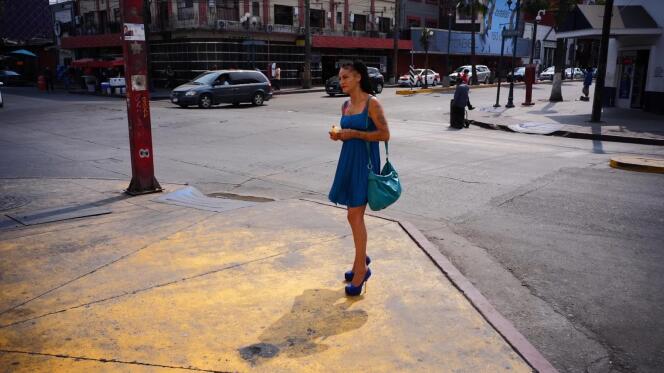THE OPINION OF THE “WORLD” – WHY NOT
Jean-Charles Hue, born in 1968, is known to film buffs for having filmed the Yenish community, to whom he offered to tell their story in an unforgettable pair of wild teams – The Lord’s BM (2011), Eat your dead (2014). But the horizon of his cinema also extends to Mexico, his chosen land to which he has already devoted a number of short and long formats, since the remarkable documentary Carne Viva (2009, still unpublished), until the recent Tijuana Bible (2019), less convincing. What will the filmmaker look for in the bustling and criminogenic city of Tijuana, a border town where he has continued to return for fifteen years? A form of intensity, of electricity in the air, but also a feeling of perdition in the broad sense, through real figures of fallen angels or damned souls, who keep one foot in reality, the other in the myth.
So The Soiled Doves of Tijuana (“the soiled doves of Tijuana”) presents itself as a collection of portraits among the prostitutes of the Zona Norte, the red light district of the city, on the asphalt of which their haggard and variegated silhouettes hover. Their names are Yolanda, Mimosa, Clementina, and they deliver snippets of words to the camera about their damaged experiences − “It’s a war zone”, says one about the neighborhood. They are captured in situ, on the sidewalk, in good neighborhood with the parishes which sometimes welcome them in the public of their ceremonies given in the open air. When night comes, they sleep on the street or in squats, and it is then the drugs that take over like a wide open abyss, greeted by puffs of crack or the end of a syringe.
Fallen prostitutes
On this frightening reality, the filmmaker does not intend to take the overlooking gaze of the sociologist. On the contrary, he engages with it in an impressionistic way, capturing its burning flashes and dizzying visions. Like this street woman gone crazy, spinning around all day, barefoot, smile on her lips, a living enigma in the heart of the city. Hue surrounds his subject with fugal motifs: the satin of the dresses, the flash of the trinkets, the flashing reflections of the city draw a garland of illuminations which compete with the patent misery of the haggard faces, the collapsing bodies. In these fallen prostitutes, the film invites us to see princesses, icons, kitsch madonnas of South American chapels haloed with sparkles, bathed in the same spiritualist atmosphere, the same aspiration to the divine, which floats in the perimeter of the neighborhood chapels . Faith and addiction, drugs and prayer come here from the same “gospel”.
You have 30% of this article left to read. The rest is reserved for subscribers.
